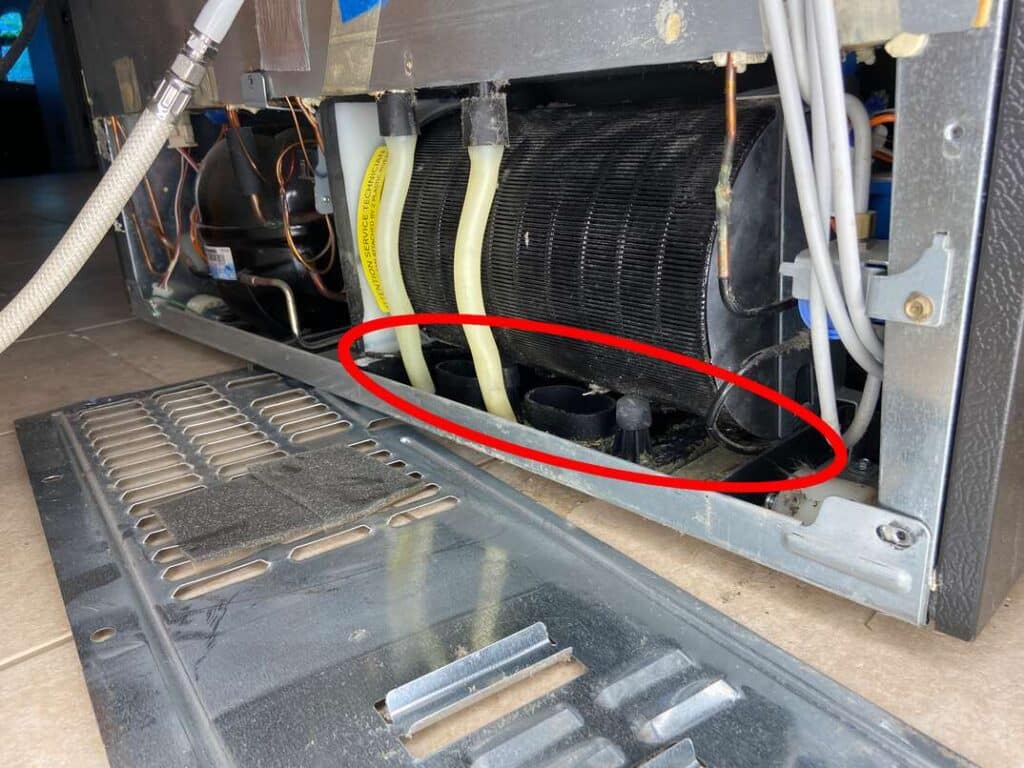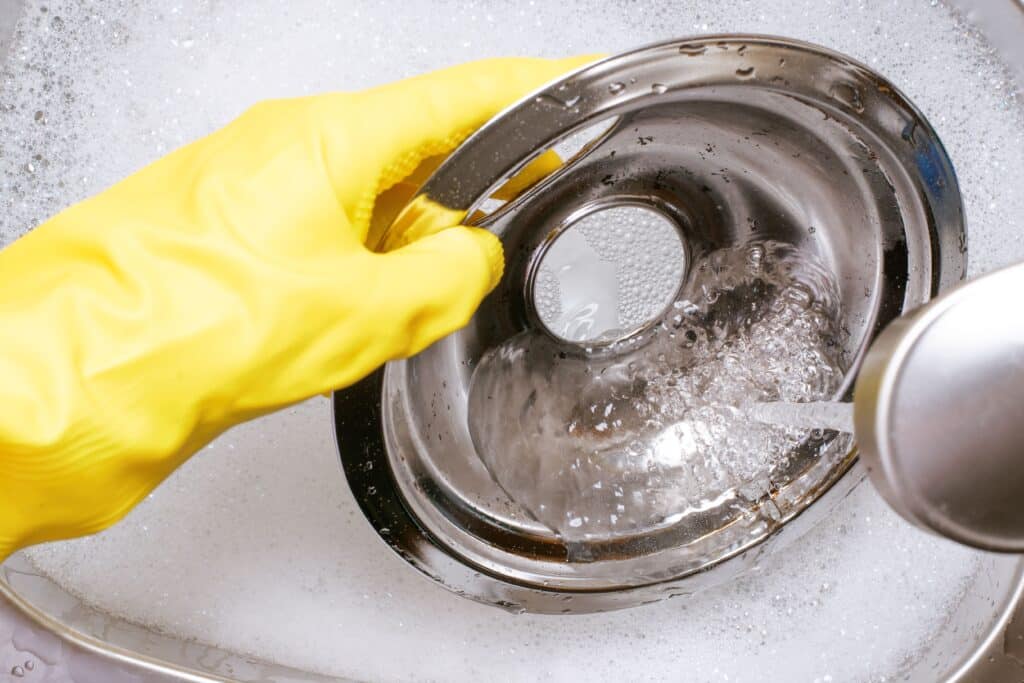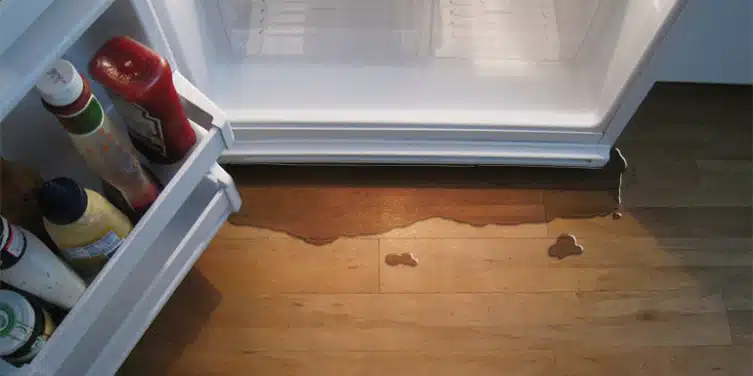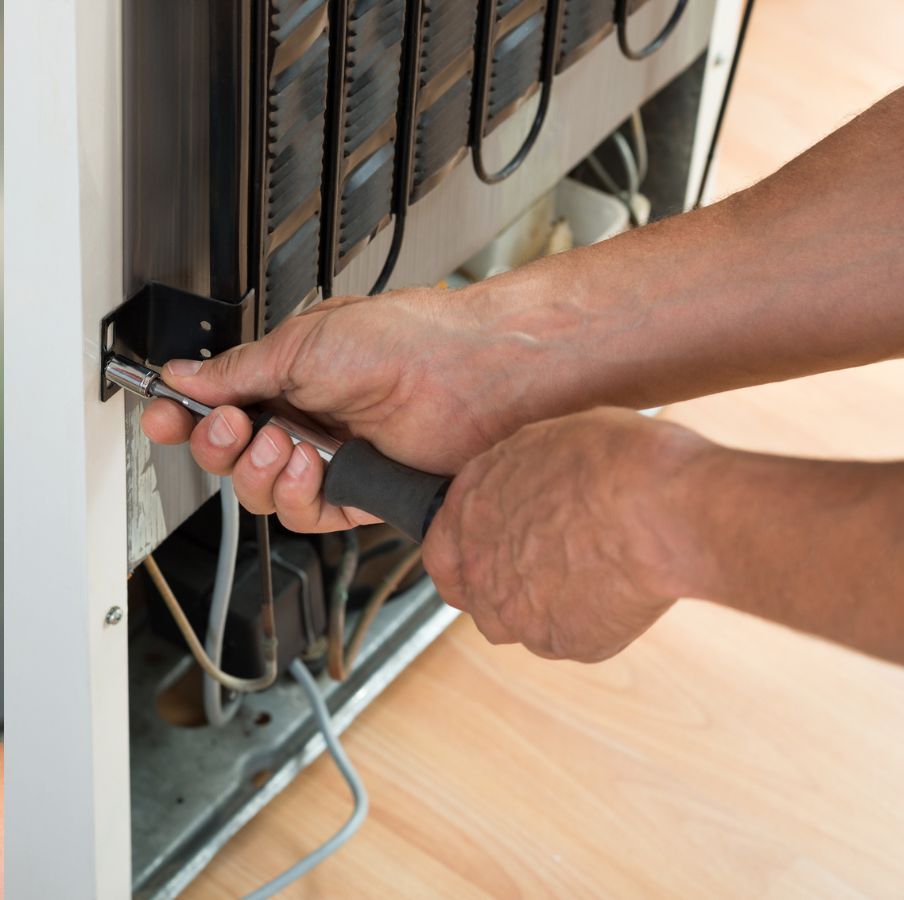Table of Contents
Unattended refrigerator leaks have a chance to cause mold growth and water damage, which can be quite unpleasant. The drip pan is one important part of your refrigerator that may leak. In this guide, we’ll look at how to find and clean the drip pan to stop leaks quickly.
lets have a quick view on Prevent Gas from Refrigerator Problems with Our Guide.
Locating the Drip Pan

Finding the drip pan is the first step in fixing refrigerator leaks. During the defrost cycle process, water that drips from the defrost drain is collected in this pan. However, discovering it isn’t always easy because the drip pan is frequently hidden in an unnoticeable place.
To begin with, remove your refrigerator from the wall so you can access the panel on the back. The drip pan is usually found under the fridge, close to the drain tube. In some models, it is reachable from the refrigerator’s side or front.
If the drip pan is not visible, refer to the instructions in your refrigerator’s handbook for assistance. Alternatively, you can look up videos or diagrams tailored to your refrigerator model online.
Cleaning the drip pan

After locating the drip pan, it’s time to thoroughly clean it to guarantee peak efficiency and stop leaks in the future. The drip pan may get clogged with dirt, debris, and even mold over time, which might harm your health and cause unpleasant smells. To clean the drip pan effectively, follow these steps:
1. Extract the Drip Pan:
Gently lift the drip pan from under the refrigerator. Use caution while doing this, as the pan can contain standing water that, if handled carelessly, could spill.
2. Remove Standing Water:
Carefully remove any standing water that may have accumulated in the drip pan. For proper removal, dump it into a bucket or down the sink. Standing water must be removed to ensure a thorough cleaning procedure.
3. Scrub with Warm, Soapy Water:
Make a solution of warm water and mild dish soap in a bucket or sink. Scrub the drip pan well using a sponge or soft brush, concentrating on any places where debris and dirt have gathered. The warm, soapy water will break down and remove odors and tough residues.
4. Use Vinegar for Sterilization (Optional):
You can add more disinfection by using equal parts white vinegar and water instead of warm, soapy water. Vinegar, a natural disinfectant, may help eliminate mold spores and bacteria from your drip pan, leaving it odor-free and spotless. Let the drip pan sit in the vinegar mixture for a few minutes, then use a brush or sponge to scrub it clean.
5. Rinse Well:
To get rid of any soap or vinegar residue, rinse the drip pan well with clean water after you’ve done cleaning it. Rinsing thoroughly is necessary to avoid soap or chemical accumulation, which may later draw dirt and debris.
6. Let the Drip Pan Air Dry Totally:
After washing, let the drip pan air dry completely before putting it back in the refrigerator. This will prevent mold growth and bad smells. You can speed up the drying process by positioning the drip pan in a location with good ventilation or patting it dry with a fresh towel.
7. Examine for Damage:
While the drip pan is being cleaned, look for any signs of damage, such as holes or cracks. Drip pan damage should be quickly fixed or replaced to preserve the strength of your refrigerator’s drainage system, as it can lead to leaks.
You may avoid leaks, get rid of smells, and guarantee your refrigerator operates at its best by following these instructions and cleaning your drip pan regularly. Proactive maintenance will not only increase the lifespan of your appliance but also reduce the need for expensive repairs down the road, saving you time and money.
Stopping Future Leaks

There are various maintenance tasks you may do regularly to stop leaks in the future:
Examine the Door Gasket: Look for evidence of deterioration or wear on the door gasket. A malfunctioning door gasket can allow warm air to enter the refrigerator, causing excessive condensation and possible leaks.
Maintain a Clean Drip Tray: To avoid obstructions in the defrost drain, regularly remove and clean the drip tray.
Examine the Defrost Drain: Look for obstructions in the defrost drain. If it is not emptying completely, water can overflow and leak.
Make sure the freezer door closes. Verify that it is closed all the way. A partially open freezer door can cause standing water buildup and increased condensation.
Watch for Overflowing Drip Pan: Be aware of any indications of overflow in the drip pan. If the drip pan is frequently overflowing, there can be a problem with the drain tube or the defrost cycle procedure.
By heeding these suggestions and giving your refrigerator frequent maintenance, you can avoid leaks and maintain its optimal operation. In the long term, resolving leaks quickly can save you money, time, and aggravation.
Conclusion
Although a leaky refrigerator can be quite annoying, you can quickly stop leaks and prevent possible water damage by learning about the function of the drip pan and using the right maintenance methods. Don’t forget to periodically check and clean the drip pan to make sure mold and debris don’t grow there. Watch out for leaks from other places as well, such as the door gasket and defrost drain, and take quick action to fix any problems you find. However You can keep your refrigerator in excellent condition and spare yourself the headache of having to deal with leaks down the road with the right maintenance.

